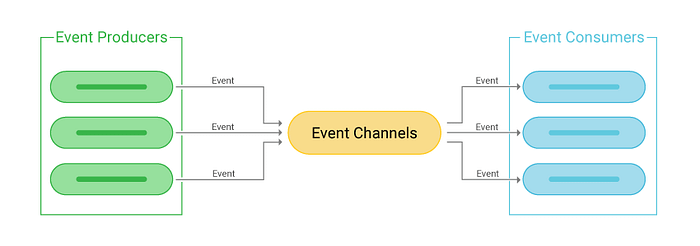Today, in the technology universe, constant evolution is a rule, and at the heart of this transformation are some tools that assist us in the continuous flow of data, and one of the most well-known is Apache Kafka.
This event streaming system has reshaped how businesses think about processing data in real-time. In this article, we will explore how Kafka is driving the shift towards event-driven architectures and the implications of this for various sectors.

The Shift to Event-Driven Architectures
Paradigm in Transition: We are witnessing a significant transition in system architecture, with an increasing tilt towards event-driven models. This change emphasizes the current state of data and information, allowing for a more agile and precise response to user needs.
Kafka as a Transformative Agent: Apache Kafka emerges as a key element in this transformation. It offers a distributed log that not only effectively stores events but also facilitates the integration and real-time processing of these events.
Driving Innovation Across Various Sectors
Fraud Detection: In the credit card sector, Kafka has been a revolutionary tool for fraud detection, enabling immediate notifications of suspicious transactions.
E-commerce and User Experience: Event streaming platforms, led by Kafka, are enabling e-commerce and customer services to become more agile, delivering functionalities faster and with less effort.
Banking Innovation: The banking sector is reinventing itself with Kafka, facilitating faster money transfers and challenging traditional systems with real-time processing solutions.
Online Gaming: The gaming industry is inherently event-driven, with each player's action being processed in real time, creating a dynamic and engaging gaming experience.
Health and IoT: In healthcare, Kafka is transforming the processing of IoT device data, such as pediatric monitors, significantly improving patient care.
Why Kafka?
Flexibility and Scalability: Kafka is adopted by both companies with legacy systems and startups, showcasing its ability to adapt and scale as needed.
Standard Platform for Event Streaming: With its features of being distributed, replicable, and fault-tolerant, Kafka establishes itself as the standard choice for event streaming.
Widespread Adoption: A significant portion of Fortune 500 companies already implement Kafka, demonstrating its applicability and reliability in critical missions.
Key Features
- Total Integration: Apache Kafka is a unified platform that offers data publishing and subscription, reliable event storage, and event processing in a distributed, scalable, and secure manner. This combination of features facilitates the building of robust and responsive applications.
Message Management
Key to Consistency: Choosing the right key for the message is crucial to maintaining the order of messages within Kafka, ensuring the integrity and correct sequence of processed data.
Topics and Partitions: Kafka topics allow simultaneous reads and writes by multiple producers and consumers, unlike traditional messaging systems. This design promotes high concurrency and throughput.
Scalability and Resilience
Efficient Scaling: Kafka's architecture allows for impressive scalability, capable of processing millions of messages per second. This is achieved by scaling the number of partitions and increasing the number of consumers.
Replication and Fault Tolerance: Kafka ensures high availability and reliability through automatic data replication among different brokers. This guarantees service continuity even in the face of failures.
Conclusion: A Future Oriented Towards Events
Event-driven architectures, with Apache Kafka at the forefront, are not only shaping the future of real-time data processing but are also democratizing innovation in sectors as diverse as finance, health, gaming, and much more. The ability to process and respond to events in real time is becoming a key competitive differentiator, highlighting the importance of Kafka in this new paradigm. As we move forward, the adoption of Kafka and event-driven architectures seems destined to grow, promoting a profound and lasting transformation in how data is processed and valued. In the next chapters of this series, we will delve deeper into the elements of the Architecture used in Kafka.
References


